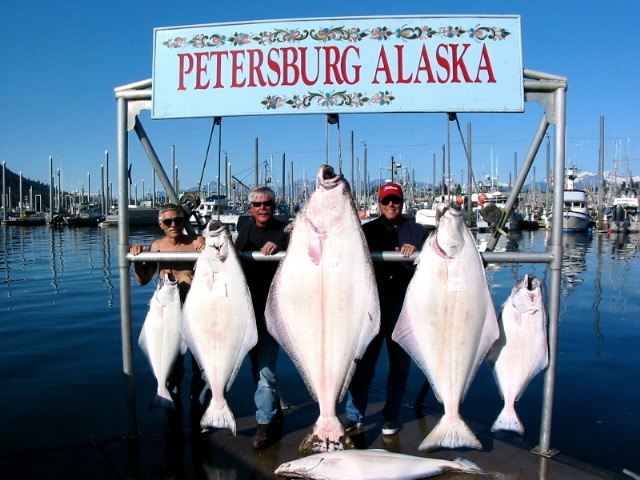Audio Player
South East charter anglers used to be able to keep two halibut per day of any size. But in recent years, there have been increasing restrictions with more bag limits and size limits. The restrictions have been developed because the charter sector has continued to over fish their harvest level.
But Pete Troy, who owns Petersburg Fishing Adventures, says he’s lost business because of it.
“Incredible amounts of business I lose because of that,” Troy says. “I have lots of interested people and when I tell them what they’re going to be able to keep for fish they say, ‘No, we’ll pass’.”
This year, a new program could give charter businesses like Troy’s a little more leeway. It’s called GAF and stands for Guided Angler Fish. It’s a voluntary provision of the new halibut catch sharing plan and allows Halibut charters to lease commercial quota for more harvest opportunity. There is no size limit on the GAF fish.
Julie Scheurer is a Fishery Management Specialist with the National Marine Fisheries Service in Juneau. NMFS is overseeing the GAF program.
“Using GAF, charter anglers could potentially keep up to two fish of any size per day,” Scheurer says. “Under this new catch sharing plan what the guided angler fish provision allows is for quota share holders is to lease a limited amount of their IFQ to a charter halibut permit holder to be harvested in the charter fishery.”
Charters guides can use GAF in different ways. They could use their charter limit of one fish which has size restrictions and then use one GAF for a fish of any size. Another option would be to use two GAFs for two fish of any size.
The idea for the transfer program came from the Charter Halibut Stakeholder Committee. The North Pacific Fishery Management Council approved the program.
“It’s a razzle dazzle deal they came up with,” Troy says. He says it was very hard to understand at first but now he says he gets it.“It means that when I get a customer on a boat that catches a fish, he’s able to pay an extra hundred and fifty dollars approximately and keep that fish, allowing him to keep two fish a day instead of just one little ping pong paddle,” Troy says.
Troy would like to give GAF a try but he hasn’t found a commercial fishermen who would sell their quota share for a reasonable price. And it will be up to the fishermen like Troy to make the transfer deals. Scheurer says NMFS won’t get involved in pricing what quota shares are worth. She says it could go through brokers like other IFQ sales or fishermen could do it on their own.
“Information is available from NMFS about who holds IFQ and so an interested charter halibut permit holder could get that list from us if they wanted to contact some of these people,” Scheurer says. “I don’t know, I imagine maybe they’ll advertise in the local newspaper or Craigslist or something like that as well.”
Perhaps the easiest scenario is fishermen who have both–charter permits and quota shares. There are 19 of those fishermen in Southeast’s Area 2C.
“They can just transfer some of their own quota to themselves if they’re operating in both fisheries,” Scheurer says.
Interest in the new program is still unknown but Heath Hilyard bets it’s not going to be very popular. He is the Executive Director of South East Alaska Guides Organization or SEAGO.
“I still only heard of about…I don’t know….less than 20 percent of South East operators who have any plan or intention or desire to lease in the guided angler lease provision,” Hilyard says.
While Hilyard understands the need for restrictions he doesn’t think this is the answer.
“We’ve said the whole time that while we appreciate the council’s intent to provide a reallocation compensation mechanism, we don’t think this is really the best approach,” Hilyard says.
He says some fishermen might use GAF this year but not next year when the program will change the conversion formula—or what the amount is for the Individual Fishing Quota to one GAF fish. Currently, it uses about 26 pounds for one fish. But next year, they’ll use an average from GAF fish caught just this season. And Hilyard says that will raise the cost to fishermen.
“So, rather than just assuming 25 pounds or less, it’s going to be, ‘Well, we know the average fish size for the guided angler fish from 2014 was 40 pounds’ and so all of a sudden the respective costs is going to go up dramatically in 2015,” Hilyard says.
GAF catches will count towards the commercial catch limit and not the charters’. The charter limit this year is about 761,000 pounds down about 17,000 from last year.
There are additional reporting requirements for charter guides using GAF. They’ll have to submit an electronic report to NMFS through their website.
And while the new transfer system is voluntary, it’s also permanent in nature. GAF will remain in federal regulations until it is changed through the regulatory process.












